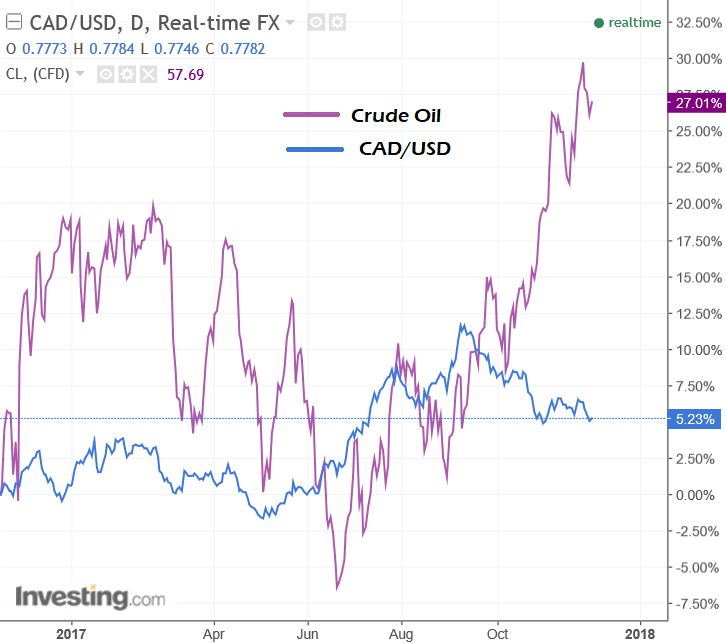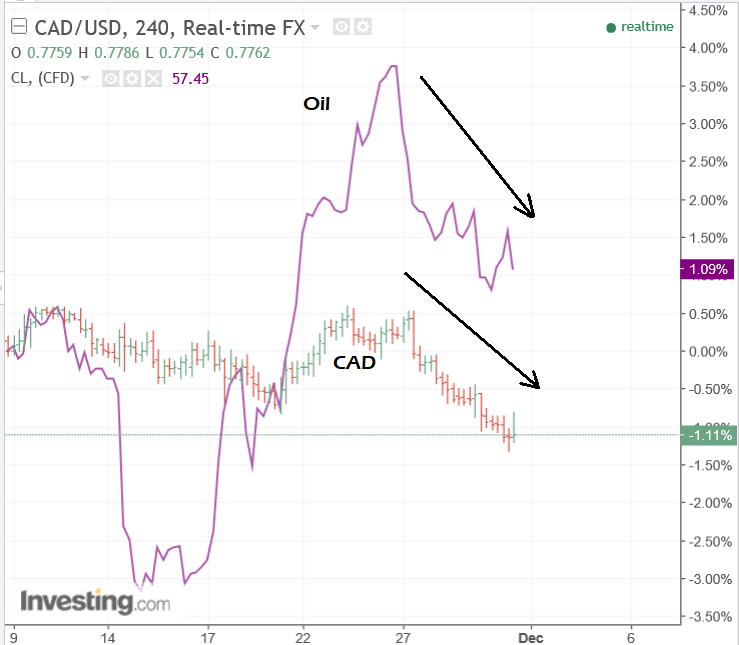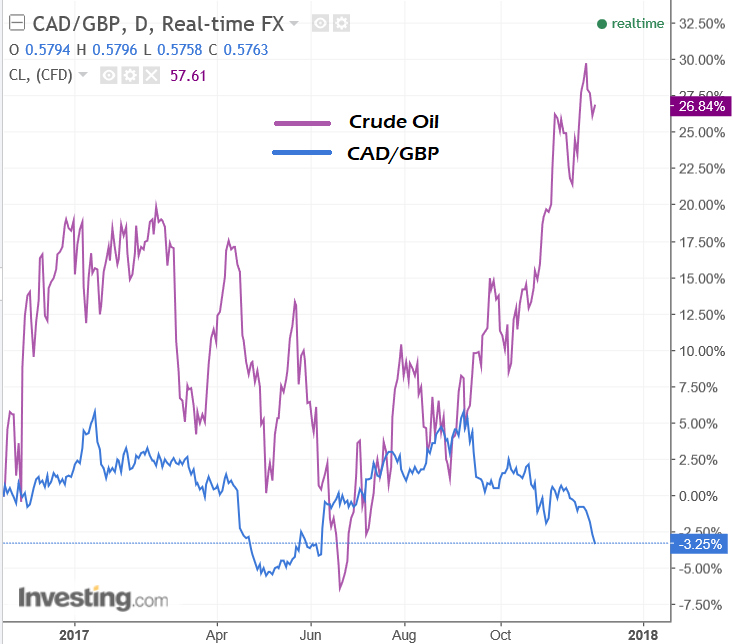Canadian Dollar Could Soon See Support from Oil Prices as Current Account Deficit Feels the Boost

The Canadian Dollar has always been characterised by its strong relationship with the price of oil and as third-quarter trade data is released we investigate the latest twist and turn of the relationship.
The Canadian Dollar has seen mixed trading against its G10 rivals since data revealed a widening of the current account deficit in the third-quarter, driven by a decline in exports.
The current account describes the difference between the gross inflow and outflow of money from a country, which is determined by trade in goods and services, cash transfers, investments and remittances to and from workers living abroad.
Statistics Canada says current account deficit widened to -$19.3bn during the latest quarter, from -$15.6bn in the previous period (revised down from -$16.2bn), which means $19.3bn more left the country during the period than what came in.
Money coming into a country increases demand for the currency while money going out increases supply, so a widening current account deficit is normally a negative driver for the currency.
"The current account balance widened to levels not seen in more than five years in the third quarter of 2017, a reason for the Canadian dollar to continue trading at a significant discount to the greenback," says Nick Exarhos, an economist CICB Capital Markets.
CAD/GBP fell 50 points to a five-month low of 0.5727 during Thursday trading, after the release, before paring some of that loss early on in the Friday session.
CAD/USD meanwhile, actually rose by around 30 points to 0.7778 following the release, and has held onto much of this gain going into the final session of the week.
"Essentially all of the slippages in Q3 came from the goods trade balance, which suffered under the weight of what was a terrible quarter for export volumes," Exarhos adds.
One of the reasons behind the Canadian Dollar’s better performance relative to the greenback could be the rise in oil prices during recent months.
"Firming in crude prices into the end of the year points to somewhat better days for the nominal Canadian goods trade balance,” says Exarhos.
Could Oil Drive Up the Canadian Dollar?
Trade balances are reported according to the total Dollar value of inbound and outbound goods.
This means that an increase in the value of goods sold overseas can reduce a trade deficit, or a current account deficit, without the country in question actually having to export any more products in volume terms.
Prices of WTI crude oil futures have risen by more than 25% in the three months to the end of November, with much of this gain coming in the fourth-quarter.
Oil is Canada’s largest export to the United States and so price fluctuations can have quite an impact on the value of the Canadian Dollar, although the correlation between the two has broken down in recent months.
Note in the chart below how prices have been diverging since September, forming a widening crocodile smile.

Above: CAD/USD exchange rate (blue) with crude oil overlay (purple). Daily intervals.
Zooming into the four-hour chart, however, holds more promise as the correlation between the two assets appears to have renewed in the last few days.

Above: CAD/USD exchange rate (red and green) with crude oil overlay (purple). 4 Hour Intervals.
CAD/GBP is also showing longer-term divergence although the correlation has never been as strong for the GBP pair, anyway.

Above: CAD/GBP exchange rate (blue) with crude oil overlay. Daily intervals.
Is this perhaps signaling the beginning of a tighter relationship? It's still too early to say.
While the evidence for a renewed correlation is only modest at the moment, rising oil prices will eventually be reflected in the reported value of Canadian exports.
All other things being the same, this could help narrow the Canadian current account deficit, which would be positive for the Dollar.
So perhaps, though not immediately relevant, the data could nevertheless change in CAD's favour during the months ahead.
Get up to 5% more foreign exchange by using a specialist provider by getting closer to the real market rate and avoid the gaping spreads charged by your bank for international payments. Learn more here.




